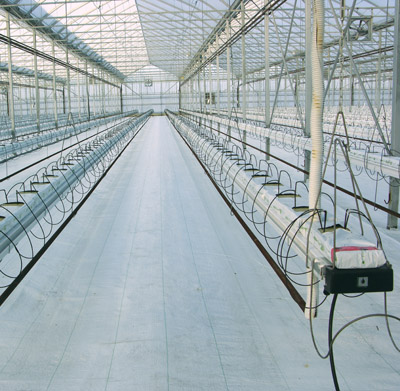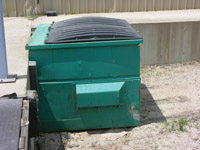
This is the time of year when many greenhouse vegetable growers are
thinking about cleaning up in preparation for next year’s crop
This is the time of year when many greenhouse vegetable growers are thinking about cleaning up in preparation for next year’s crop. Cleaning up is a multi-step process that includes removal and disposal of crop debris, washing and disinfection of the greenhouse structure, and cleaning and disinfection of various equipment, tools, etc. This process plays a very important role in minimizing carryover of pests and diseases, which in turn, assists in more successful establishment of biological controls and in a generally healthier, more productive crop.

|
|
| Cleaning up is a multi-step process. PHOTO COURTESY GILLIAN FERGUSON, OMAFRA Advertisement
|
In this article, I would like to highlight crop disposal, because if this step is not diligently and properly undertaken, all the care and effort associated with the other cleanup steps will be for naught.
Debris that is piled up close to a greenhouse, and infested with pests or disease-causing organisms (pathogens), is a ready source of infestation that can turn out to be a major and costly headache. The reason for this is the longevity and hardiness of many of these organisms. For example, the canker-causing bacteria Clavibacter michiganensis can survive within infected tissue at least two years in dry soil, and as long as 36 weeks at 20℃ in non-sterile soil.
Other examples include Pythium, Botrytis and Didymella bryoniae, the gummy stem blight-causing fungus, which all produce thick-walled spores that can withstand long periods of very cold temperatures. Also, eggs of the greenhouse whitefly can survive up to 15 days at -30℃, and as many as five days at -60℃. So, to minimize early incidence of insect and mite pests and diseases, we need to pay particular attention to the crop disposal step that may be broken down into two parts – transportation and disposal.
 |
|
| Example of securely covered disposal bin for collecting bagged plant debris. PHOTO COURTESY GILLIAN FERGUSON, OMAFRA |
TRANSPORTATION OF DEBRIS
■ The manner in which debris is transported can determine whether a pest or disease is spread further or not. For example, debris piled into open bins provides a great opportunity for the spread of diseased debris and for all pests while the bins are being transported from their place of origin to their destination for disposal. All operations in the area, particularly those in close vicinity to the transport route, would be susceptible to contamination. Accordingly, all plant debris should be placed in sturdy garbage bags that are not easily punctured before being placed in the disposal bins. Securely covering the contents of a bin reduces the chance of loose pieces of debris being blown about during transportation.
DISPOSAL OF CROP DEBRIS
■ In disposing of crop debris, growers need to consider several factors as follows:
- Location of disposal site – It is best that any dumpsite should be sufficiently far from any production or packing facility to minimize contamination or infestation of those operations by windblown debris and flying insects.
- Treatment of crop debris – Some landfill sites only accept shredded plant material, and therefore all plant debris should be prepared accordingly prior to transportation to such sites.
- Timing of covering debris – Ideally, plant debris should be buried immediately after delivery to the site to minimize aerial transport of pests and pathogens.
- Treatment of field residues – If disposal of unbagged material occurs on a cleared field, such plant debris should be immediately plowed under and buried to a depth of at least 30 centimetres to minimize the potential escape of pests and pathogens, to facilitate decomposition of debris, and to assist in the destruction of pests and pathogens. It is very important to ensure that plant debris is not left in open piles in the field. Such open piles could result in the survival of pests and pathogens due to the warmer temperatures that exist within the piles.
In conclusion, as we approach the end of this year’s crop and its disposal, we need to carefully consider how we proceed with this step of the cleanup process. Being diligent in the collection and disposal of this year’s crop remains can pay huge dividends in next year’s crop.
Gillian Ferguson is the greenhouse vegetable IPM specialist with the Ontario Ministry of Agriculture, Food and Rural Affairs in Harrow, Ontario. • Gillian.Ferguson@Ontario.ca
Print this page